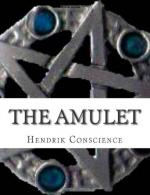One merchant, called the rich Fugger, left at his death legacies amounting to nearly six millions of gold crowns, a sum which for that period would seem fabulous, if the fact were not established by indisputable documents.
This wealth and the presence of so many nations vying with each other had carried luxury to such a height that magistrates were frequently obliged to publish edicts, in order to restrain the lavish expenditure. This was not done on account of the foreign inhabitants of the place, but for the advantage of many noble families and the people of the middle classes, who were tempted by the example of others to a display of magnificence which might have seriously injured their fortunes.
The greater part of the Italian merchants from Lucca, Genoa, Florence, and other cities beyond the Alps, were noblemen, and from this circumstance they were thrown into intimate intercourse with the noble families of Antwerp, all of whom spoke fluently three or four languages, and who particularly studied to speak with purity and elegance the soft Italian idiom.[5]
In the Hipdorp, not far from the Church of St. James, stood an elegant mansion, which was the favorite resort of the elite of the Italian merchants. It was the residence of William Van de Werve, lord of Schilde.
Although this nobleman did not himself engage in mercantile transactions, because the aristocratic families of Brabant regarded commerce as an occupation unsuitable to persons of high birth,[6] he was very cordial and hospitable to all strangers whose rank entitled them to admission to his home circle. Moreover, he was extremely wealthy, luxurious in his manner of living, and so well versed in three or four different languages, that he could with ease enter into an agreeable and useful conversation in either of them.
The house of Mr. Van de Werve had still other attractions to noble foreigners. He had a daughter of extraordinary beauty, so lovely, so modest, notwithstanding the homage offered to her charms, that her admirers had surnamed her la bionda maraviglia, “the wonderful blonde.”
One morning in the year 1550 the beautiful Mary Van de Werve was seated in her father’s house in a richly sculptured arm-chair. The young girl had apparently just returned from church, as she still held in her hand a rosary of precious stones, and her hood lay on a chair near her. She seemed to be engrossed by some pleasing thought which filled her heart with a sweet anticipation, for a slight smile parted her lips, and her eyes were upraised to heaven as if imploring a favor from Almighty God.
Against the wall behind her hung a picture from the pencil of John Van Eyck, in which the great master had represented the Virgin in prayer, whilst she was still ignorant of the sublime destiny that awaited her.
The artist had lavished upon this masterpiece the most ardent inspirations of his pious and poetic genius, for the image seemed to live and think. It charmed by the beauty of feature, the majestic calm of expression, the sweetness of the smile, the look full of love cast from earth to heaven.




